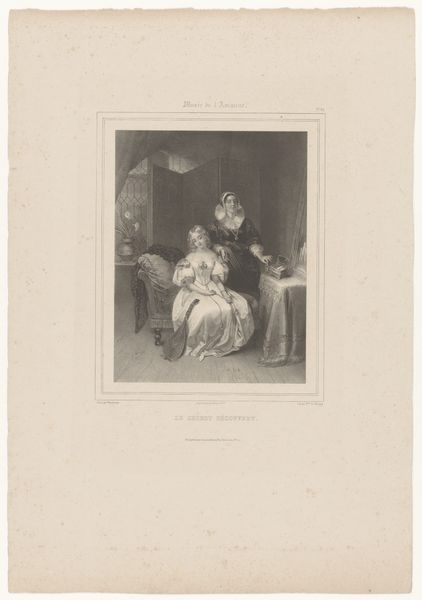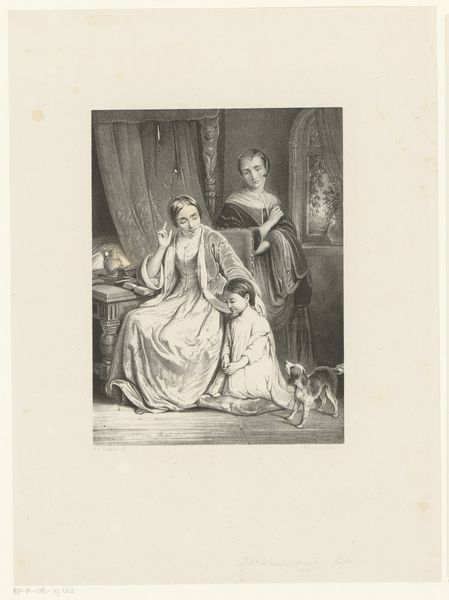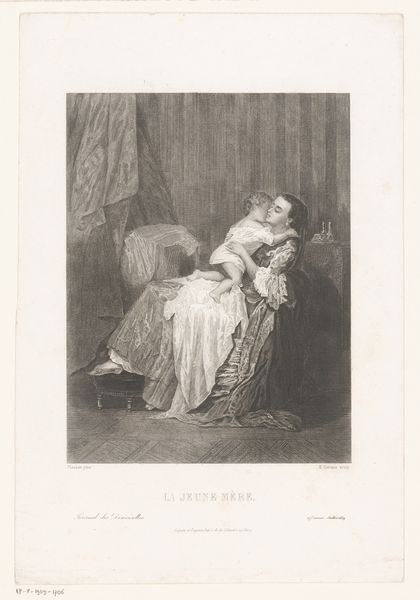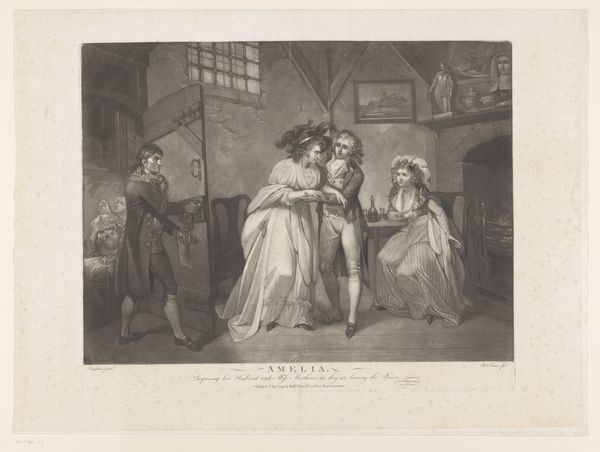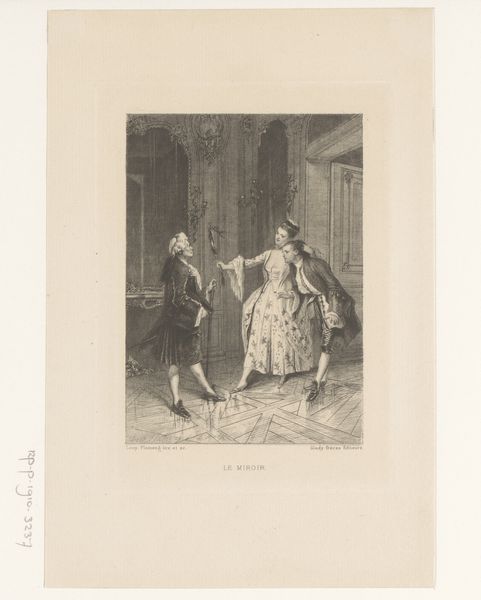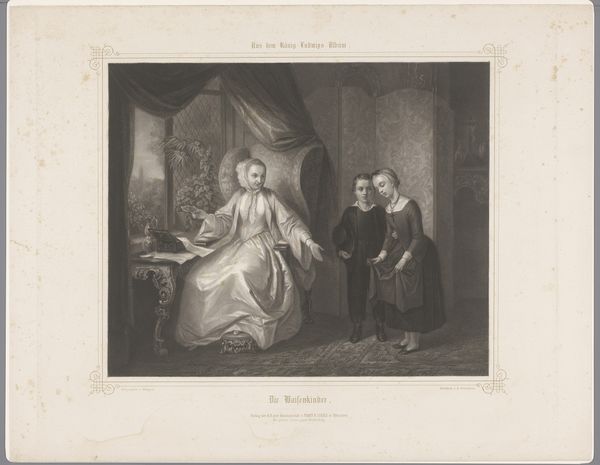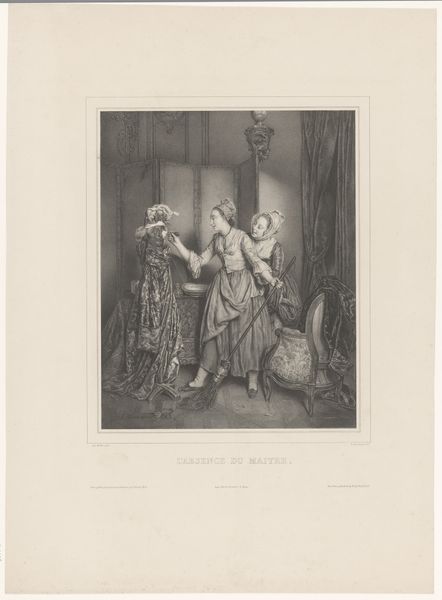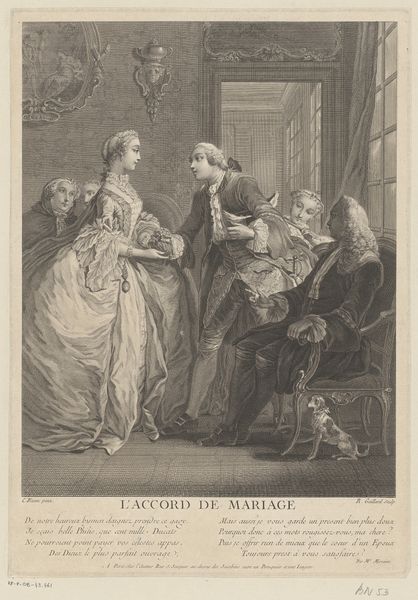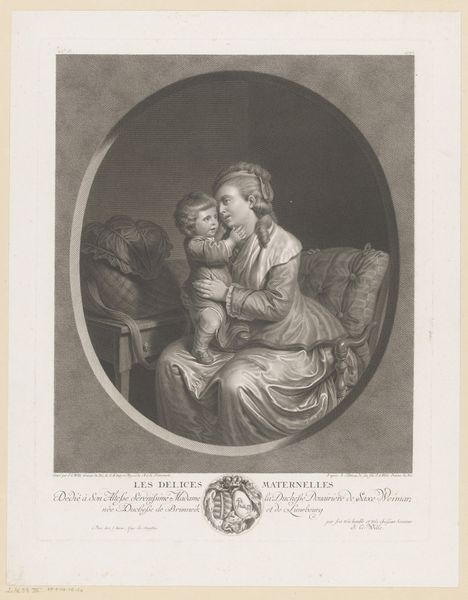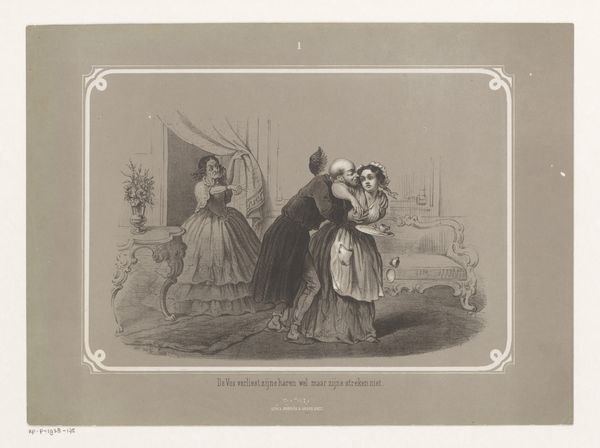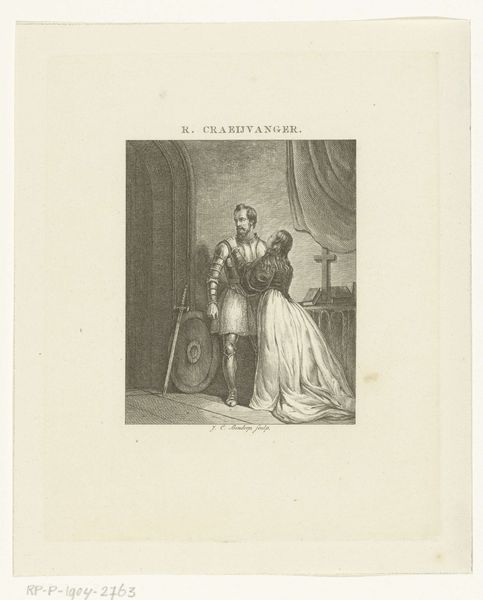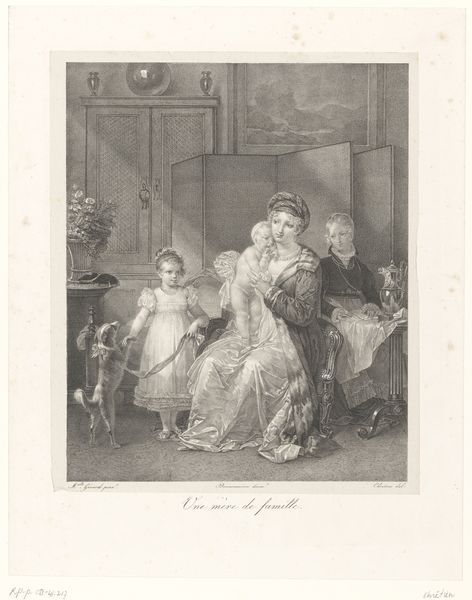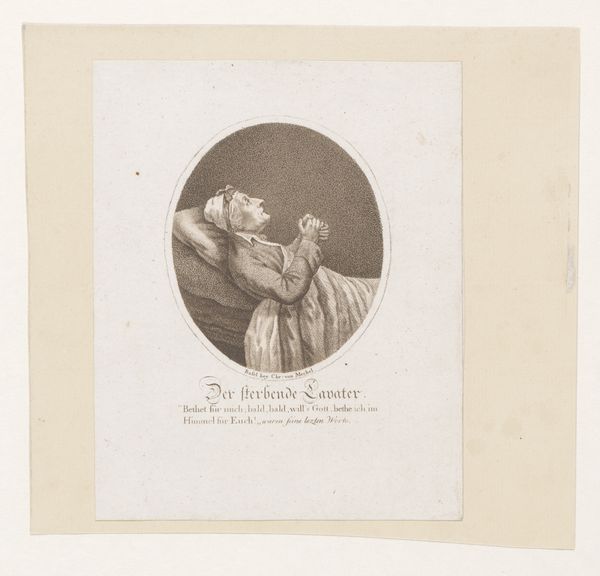
Dimensions: height 536 mm, width 432 mm
Copyright: Rijks Museum: Open Domain
Curator: Let's take a look at "Two Girls with a Letter," an engraving made sometime between 1843 and 1886 by Paul Droehmer. It immediately strikes me as quite sentimental. What's your take? Editor: Initially, the contrast is what grabs me. The stark tonal gradations created by the engraving process; it's almost theatrical, highlighting the figures against the shadowy room. The texture seems built up through precise, almost mechanical labor. Curator: Absolutely, you see the hand in the work, or perhaps the tools used to make it! Consider the social implications of printmaking at this time. It democratized image reproduction and the sharing of narratives like the one depicted. Droehmer cleverly capitalizes on the desire of the expanding middle class for domestic scenes rendered with feeling. Editor: But let’s not overlook the pictorial construction. Observe how Droehmer employs line and form to create a contained and intimate space. The women are the clear focal point, rendered in delicate detail. Even the curves of their dresses seem deliberate, reflecting internal emotion and perhaps even restraint. Curator: And the fashions they're wearing denote social standing. The billowing skirts, the hairstyles; these were readily recognizable signifiers of class to the audience that bought these prints. Engravings like this weren't just about aesthetics; they were tools in shaping perceptions and propagating aspirational lifestyles. What messages did this domestic image promote, and whose interests did that ultimately serve? Editor: Agreed. But I am also thinking of the romantic genre! Droehmer crafts an aesthetic experience where mood is foregrounded, evoking contemplation. From the soft folds of the curtain, mirroring the anxiety in the supplicating figure’s gesture, the artist is making something quite evocative from essentially mechanical means. Curator: So, while we’re immersed in aesthetic considerations and their romantic underpinnings, let's recall the print market itself. It shaped artistic production. Droehmer’s creation was driven by material needs and social conditions of its time. Editor: A perfect reminder that focusing closely on how we see—and what we see—offers equally enriching perspectives.
Comments
No comments
Be the first to comment and join the conversation on the ultimate creative platform.
